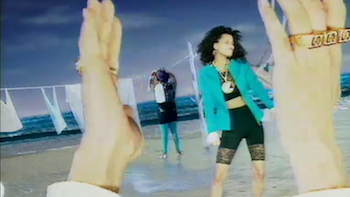Chord strangeness will work better if you slow the music down.
____________
“The Essential Secrets of Songwriting” 10-eBook Bundle comes with this FREE eBOOK: “Creative Chord Progressions”. 11 Songwriting eBooks for $37
_____________
 Compare the way chord progressions worked back in the 1600s with the way they’re used today, and you’ll see that nothing much has changed. Take a look at the chords you’ve used in your latest song, and you might be interested in knowing that composers as far back as J.S. Bach (1685-1750) probably used chords pretty much the same way.
Compare the way chord progressions worked back in the 1600s with the way they’re used today, and you’ll see that nothing much has changed. Take a look at the chords you’ve used in your latest song, and you might be interested in knowing that composers as far back as J.S. Bach (1685-1750) probably used chords pretty much the same way.
True, today’s ears are more curious about the weird possibilities that come from using chords we don’t expect, certainly more so than 17th century ears. Give Neneh Cherry’s Manchild a listen, and you’ve got a chord progression that sounds like it’s constantly changing direction, never settling.
But “Manchild” is a bit of a loner out there in the musical world. Most songs today use very predictable progressions, leaving most musical innovation to melodic shape, lyrics, phrasing, instrumentation, and formal design.
But if you’re looking to create a bit of musical excitement with your chord progressions, and want stray away from the norm just a bit, here are some tips:
- Slow the tempo down. Complex chord progressions that use lots of unexpected chords will work a bit better if the tempo is slower. That’s because slower tempos allow the listener to adjust to the strangeness of weird chords better. The flip-side of that advice is that you can create an interesting sense of musical chaos by throwing in odd chords at a fast tempo. So if chaos is what you’re after, weird chords coupled with a fast tempo will work.
- Try pedal point to help glue a chord progression together. Pedal point means keeping the same bass note playing, regardless of what the chord is above it. Let’s say you’re using this progression: C G Bb F Eb Ab G C. It seems to go in different tonal directions as it proceeds, first in C, then in F, then in Ab, and finally back to C. So try using a bass pedal point. Get your bass player to play the note C (or keep the note C in the left hand of your keyboard part) and keep it there for the entire progression. It gives you this: C G/C Bb/C F/C Eb/C Ab/C G/C C. That pedal point C will help make musical sense of the entire progression.
- Try to begin and end progressions solidly in one key or another, leaving strangeness for the middle. If you keep the ends of your progressions strongly in a key, the listener can make better sense of the entire progression. So when things get weird in the middle, they may feel a bit lost, but making the end tonally stronger will give the listener a sense of direction and musical purpose.
- Try to pair predictable with unpredictable. If your chord progression sounds a bit strange and unpredictable, see what you can do to make other elements in your music more predictable. So you might look at the melody, simplifying it by using lots of scale-wise passages and arpeggios. Also, try developing a catchy hook that can help the audience fixate on something predictable and memorable.
- Use weird progressions in a verse or bridge, and use more predictable ones in the chorus. Audiences are more likely to accept strangeness in a verse because they are instinctively waiting for the chorus to simplify the musical structure. The same goes for the bridge. If the chorus is strong, repetitive and catchy, listeners are far more likely to accept strangeness in a verse or bridge.
______________
 Written by Gary Ewer. Follow on Twitter.
Written by Gary Ewer. Follow on Twitter.
“The Essential Secrets of Songwriting” 6-eBook Bundle looks at songwriting from every angle, and has been used by thousands of songwriters. How to use chords, write melodies, and craft winning lyrics. $95.70 $37.00 (and you’ll receive a FREE copy of “From Amateur to Ace: Writing Songs Like a Pro.“)










this is great